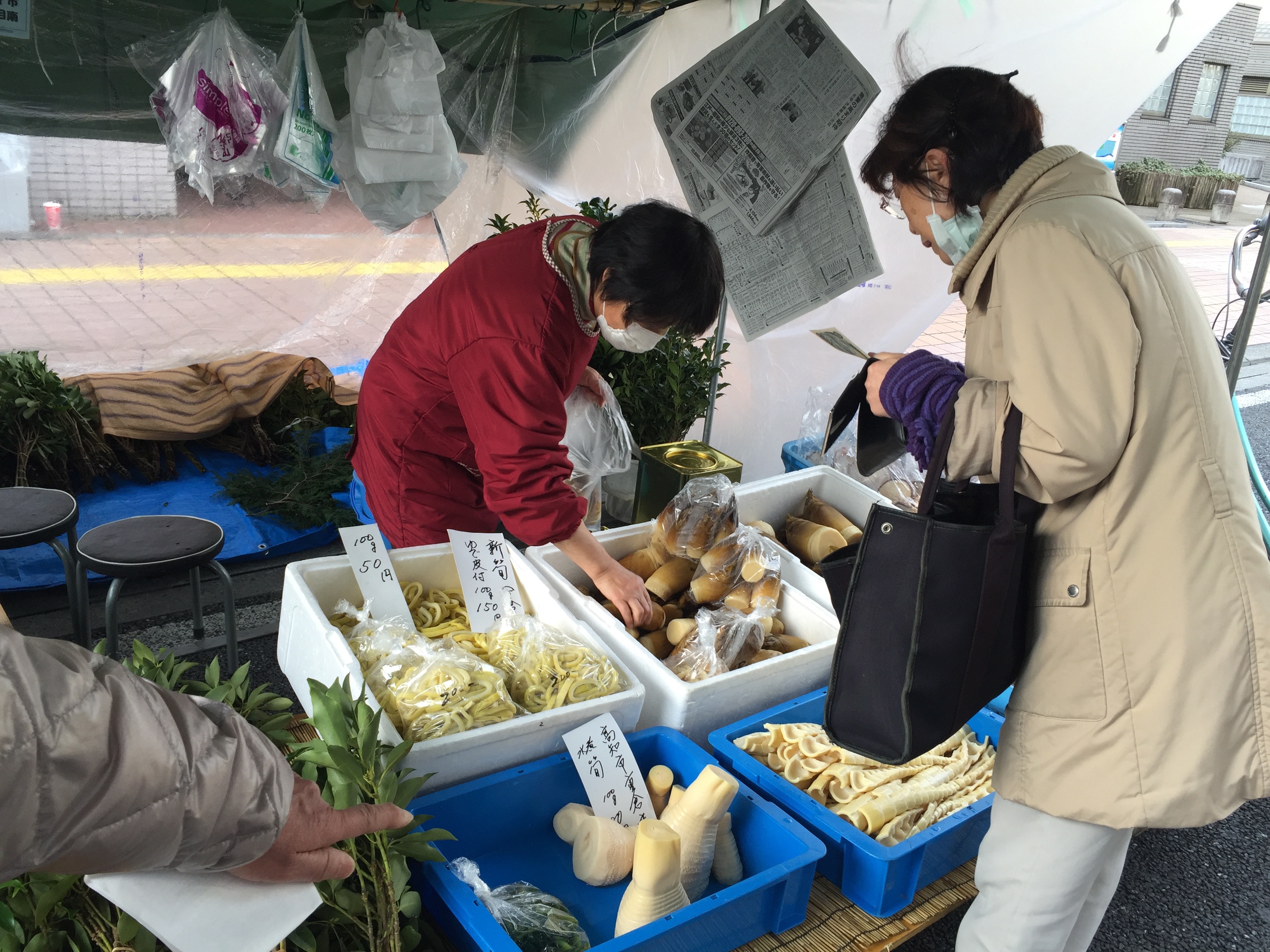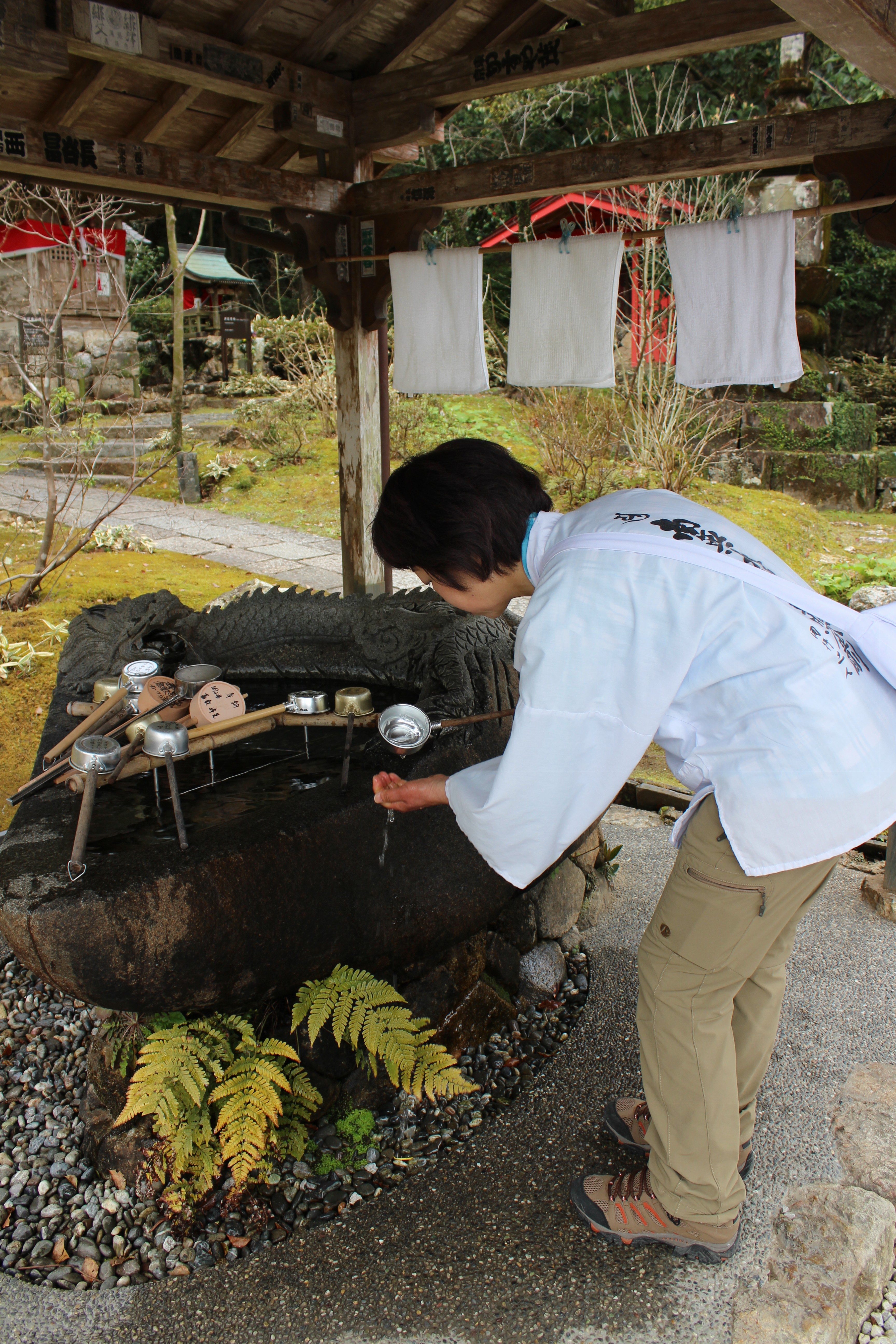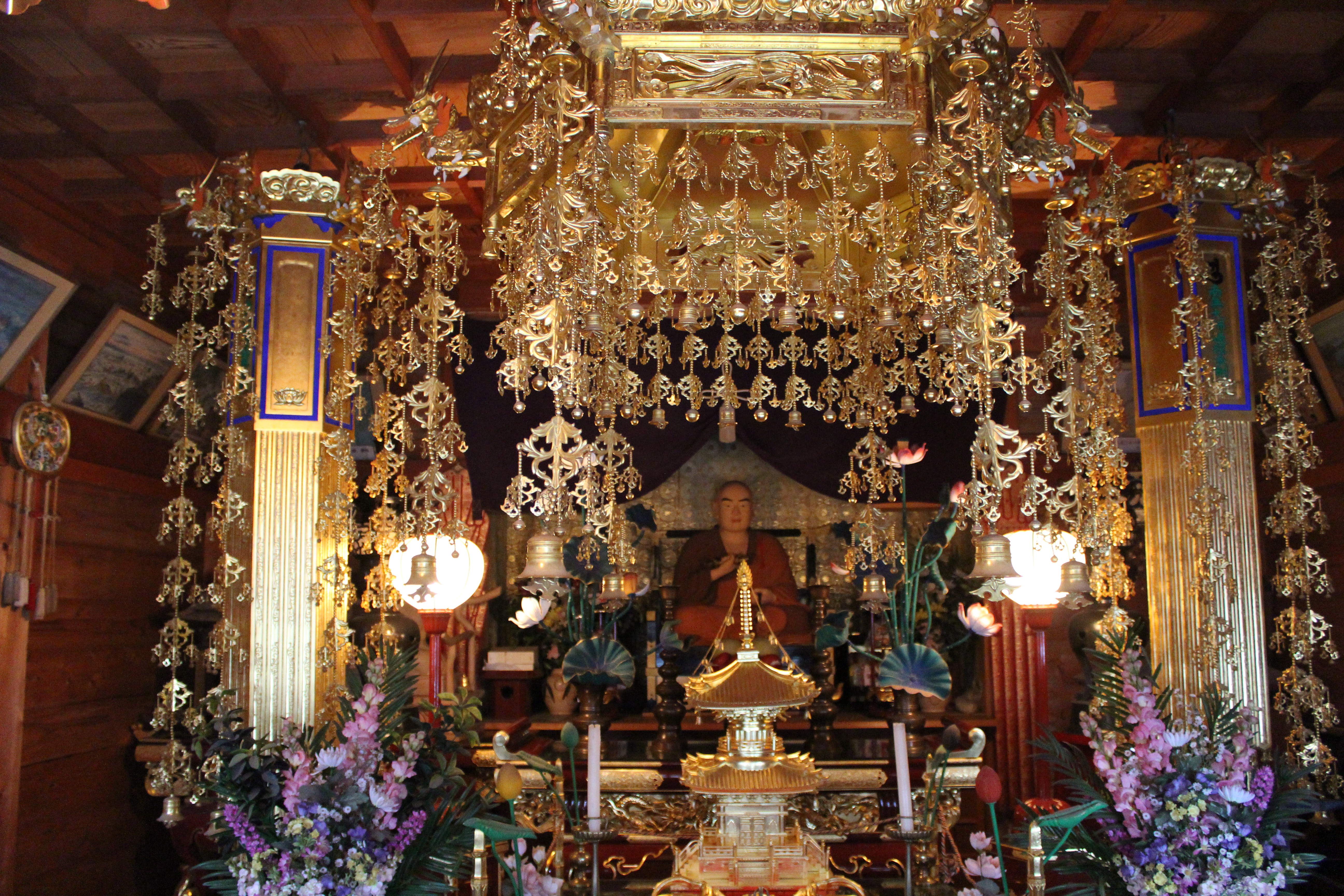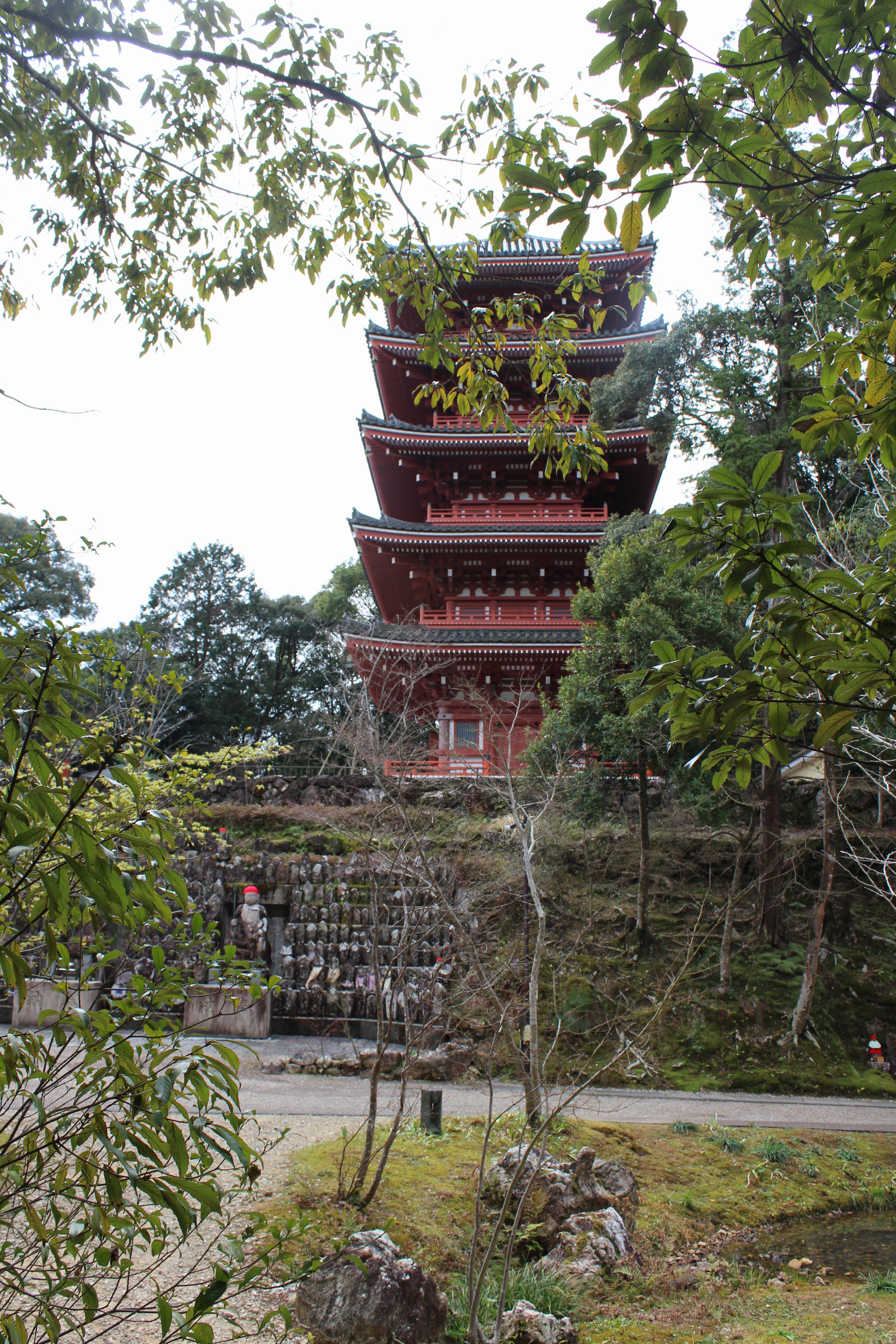Kuniko–san, a good friend to walk with (temples 28 – 33)
On my pilgrimage, occasionally I met women who did the pilgrimage alone. One of them was Kuniko-san, a Japanese woman who could talk English well enough to communicate in English – which was great for me. For several days, we booked the same place for overnight and walked some stretches of the way together. Sometimes, she had to take a bus because of a foot problem.
Kuniko-san and myself on the weekly Sunday market of Kōchi City
The market woman shows a customer two sprigs of the shikimi (Elysium anisatum or Japanese star anis) used for Buddhist temples and graves. It is poisonous and therefore they think that the plant protects the grave from wild animals. Honoring the ancestors is very important in Japan.
Many people in Japan wear mouth masks when they don’t want to get or give cold or flu.
Just a little bit outside of Kōchi City stands the temple Chikurinji (temple 31) overlooking the Urado Bay. The beauty was intriguing. Already before entering the temple, moss covered grounds, trees and blooming camellias were creating a magical atmosphere.
In Japanese temples, many ishi-dōrōs (stone lanterns) can be seen. Originally, they come from China with the import of Buddhism. There are many forms of stone lanterns.
Before entering the temple grounds, it is important to do the cleansing ritual. Most of the time, the water comes out of a dragon’s mouth. The white towels on the bamboo stick are for pilgrims to dry their hands.
In every temple of the Shingon Sect, a statue of Kōbō Daishi in meditation sits in the center of the Daishi Hall. Often, a cord connects Kōbō Daishi with a pilgrim touching the cord from outside.
At the Chikurinji temple, the cord is connected with a golden Vajra, symbol of Enlightenment. Pilgrims touch the Vajra when asking for help.
A five story pagoda dominates the temple grounds replacing a three story pagoda destroyed by a typhoon.
Hito-koto Jizō or One-thing (or One-wish-granting) Jizō. You can buy a little Jizō for 1000 Yen and wish for one thing.
Wishes on wooden plates written by believers surround Hito-koto Jizō.
Not knowing Japanese nor being knowledgeable in Shingon Buddhism, the significance of the statues was often a mystery. However, I liked them very much.











